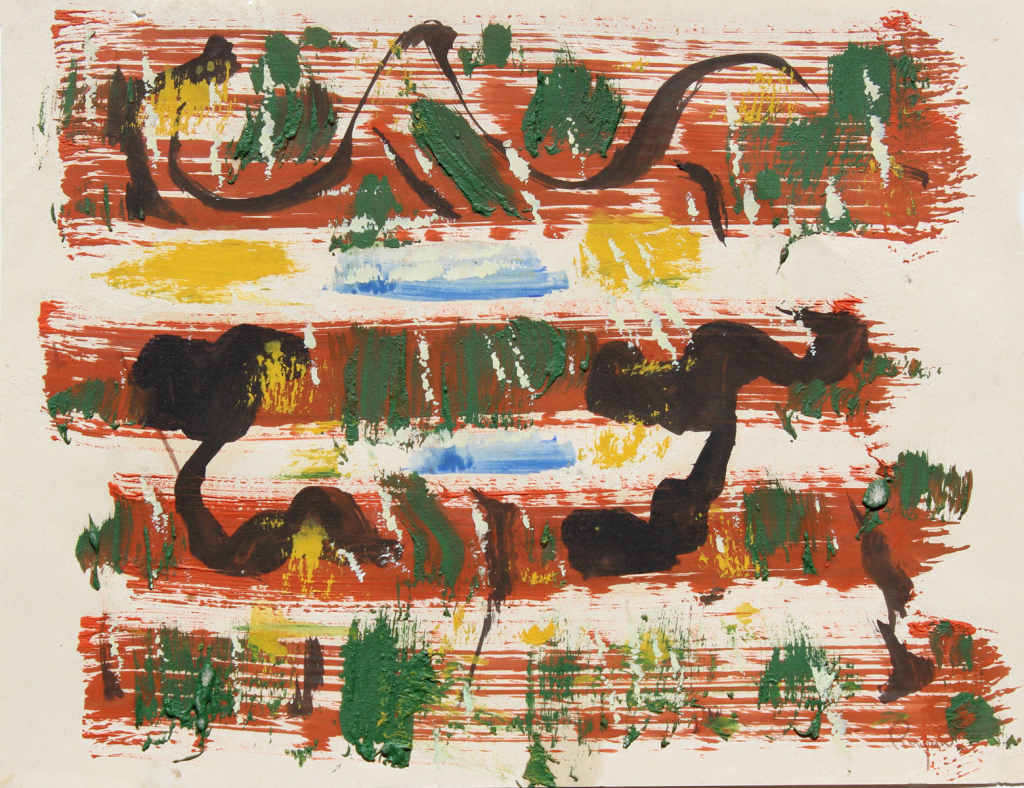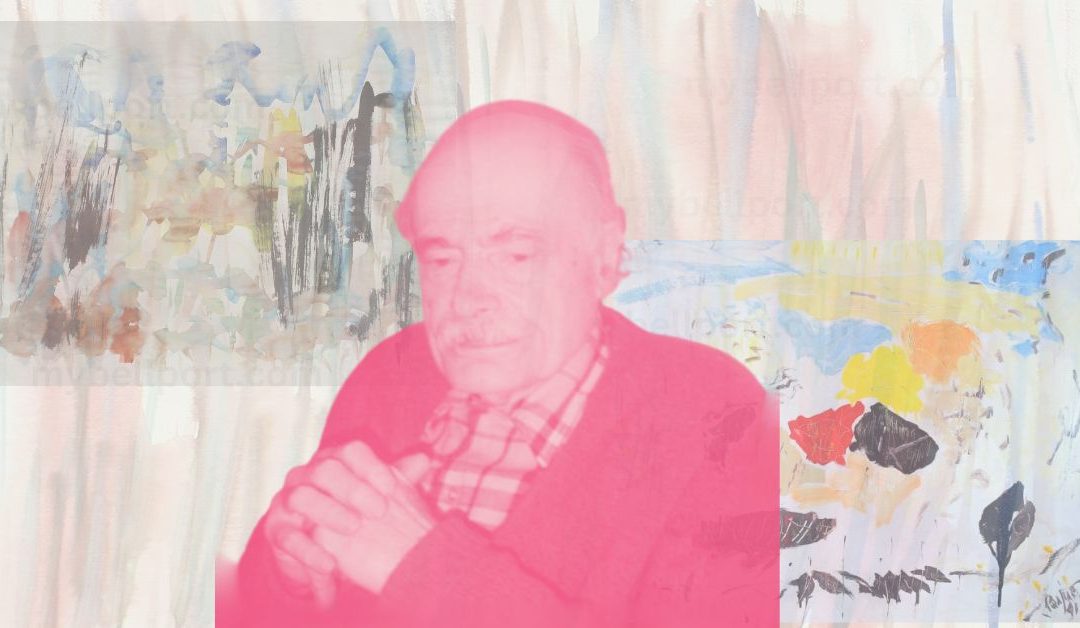Who Was Arthur Pinajian?
Arthur Pinajian, an enigmatic and reclusive figure, lived a life steeped in both obscurity and brilliance. Born to Armenian-American parents, he carried the weight of an immigrant legacy while forging an artistic path few would notice during his lifetime. His journey was one of quiet persistence, marked by a relentless pursuit of creative expression.
In his early years, Pinajian dabbled in the world of comic books, crafting vivid panels that showcased a keen eye for storytelling. But there was always a sense that he sought something more profound, something transcendent. His transition into abstract expressionism marked a dramatic departure from the commercial art world. This transformation was both a bold risk and a declaration of his artistic identity, setting the stage for what would later become a remarkable rediscovery.
Early Life and Artistic Beginnings
Pinajian’s childhood was a mosaic of challenges and inspirations. Growing up in a modest household, he displayed an innate talent for drawing, a gift that would eventually define his life. Despite limited resources, he nurtured his skills, immersing himself in the world of visual art. His initial foray into comics allowed him to hone his craft, blending bold lines with dynamic storytelling.
The early days of his career saw him working as an illustrator, contributing to the golden age of comics. Yet, even as he thrived in this industry, there was an undercurrent of dissatisfaction. His artistic ambitions extended far beyond the constraints of sequential art. This hunger for a deeper form of expression led him to explore the uncharted territories of abstract expressionism, a movement that resonated with his inner turmoil and boundless creativity.
Transition from Comics to Abstract Expressionism
Stepping away from the comic book industry was no easy feat for Pinajian. It required not only courage but also an unwavering belief in his vision. He left behind a stable career to pursue what many would consider an impractical dream. Yet, for Pinajian, the shift was inevitable—an act of self-liberation.
His early abstract works reveal a restless energy, an artist grappling with the complexities of form and color. Over time, his style evolved into something uniquely his own. Through layered compositions and sweeping brushstrokes, Pinajian communicated a world of emotion, capturing the essence of human experience.
If you explore his abstract expressionism, you’ll find influences that range from the raw intensity of Pollock to the ethereal qualities of Kandinsky. Yet, Pinajian’s works stand apart, imbued with a quiet intensity that speaks directly to the soul. These pieces, now celebrated, were once hidden from view, a testament to an artist whose genius was far ahead of his time.

The Discovery of Arthur Pinajian’s Artwork
The Bellport Cottage – A Hidden Treasure
Nestled in the quiet hamlet of Bellport, Long Island, a modest cottage harbored one of the art world’s most astonishing secrets. Within its unassuming walls lay a treasure trove of artistic brilliance, unseen and unappreciated for decades. It was a place where time seemed to stand still, preserving the legacy of a man the world had largely overlooked.
The property was purchased in 2006 by Tom Schultz, a former deli owner and father of three, as an investment for around $300,000. Schultz had been instructed by the cottage’s previous owners to throw away the contents, including thousands of artworks. However, as he sifted through the nearly 7,000 paintings, drawings, and journals, Schultz made a life-changing decision. “It was just someone’s life’s work, and it doesn’t belong in a Dumpster,” he later said.
How the Collection Was Found
Schultz’s discovery began as a routine clearing-out process. Guided by a deep respect for human effort instilled by his late father, he could not bring himself to discard the works. These creations, stacked in dusty piles, revealed the artistic soul of Arthur Pinajian, an obscure Armenian-American painter and decorated World War II veteran who lived in the cottage until his death in 1999.
Recognizing the potential value, Schultz sought the advice of art historian Peter Hastings Falk, known for appraising works from the Andy Warhol estate. Falk identified the collection as a hidden gem, filled with lyrical abstract landscapes, and described Pinajian as a “brilliant colorist” who exhibited undeniable genius.
Learn About the Arthur Pinajian Collection, and you’ll discover the painstaking efforts that brought these forgotten pieces back to life.
Preserving the Legacy – The Role of Art Historians
The rediscovery of Pinajian’s work would have remained a footnote without the dedication of art historians. Schultz’s foresight, combined with the expertise of Falk, transformed the abandoned collection into a celebrated treasure. Fifty of Pinajian’s landscapes are now exhibited in Manhattan’s Fuller Building, fulfilling the artist’s dream of showcasing his work in New York. Some of his paintings have sold for as much as $500,000, and the entire collection has been valued at up to $30 million.
Friends of Pinajian, like Nick DiPaolo, remember him as a humble figure who painted for the love of it, indifferent to fame or financial success. His anonymity ended with Schultz’s intervention, proving that one person’s perception of treasure can change the trajectory of history.
Artistic Style and Contributions
Exploring Pinajian’s Abstract Expressionism
Pinajian’s work in abstract expressionism is a testament to his unyielding dedication to his craft. His pieces are characterized by bold, sweeping brushstrokes and a masterful command of color. Each canvas seems alive, pulsating with an energy that invites viewers to lose themselves in its depths.
The recurring themes in his works reflect a profound connection to nature and the human spirit. His landscapes, often abstracted, evoke a sense of place that transcends the physical. The interplay of light and shadow, of chaos and harmony, mirrors the complexity of existence itself.
Comparison with Contemporary Artists
Though Pinajian’s name was unknown during his lifetime, his work aligns with some of the most celebrated abstract expressionists of the 20th century. His pieces share a kinship with the raw intensity of Jackson Pollock and the emotive resonance of Mark Rothko. Yet, Pinajian’s art possesses a distinct voice—a quieter, introspective quality that sets it apart.
Unlike many of his contemporaries, Pinajian worked in solitude, free from the influence of major art movements. This independence allowed his creativity to flourish, unencumbered by external pressures or expectations. His works now stand as a testament to the power of individuality in the creative process.
Pinajian’s Influences and Techniques
Pinajian drew inspiration from a wide array of sources. The vibrant hues of the Fauves, the structural boldness of Cubism, and the spiritual undertones of Kandinsky all find echoes in his work. Yet, he synthesized these influences into something uniquely his own.
His techniques were equally innovative. Pinajian often layered paint to create depth and texture, imbuing his canvases with a tactile quality. His use of color was both daring and intuitive, with palettes that ranged from muted earth tones to explosive bursts of brilliance. These elements combined to form a body of work that is as varied as it is cohesive, a true reflection of his artistic journey.
The Impact of the Discovery
The Market Value of Pinajian’s Work
The rediscovery of Arthur Pinajian’s artwork sent ripples through the art market, transforming a forgotten collection into a sought-after treasure. Initially dismissed as mere clutter, his paintings and sketches have since been appraised at astonishing values. Collectors and investors alike have recognized the artistic brilliance imbued in each piece.
Pinajian’s works now command impressive prices at auctions and galleries, a testament to their undeniable impact. The art world, known for its capricious nature, has embraced him as a symbol of hidden genius. His rise from obscurity to prominence serves as a reminder of the untapped potential that can lie dormant for decades.
Public and Critical Reception
The public’s response to Pinajian’s rediscovered works has been overwhelmingly positive. Exhibitions showcasing his art have drawn crowds eager to witness the beauty of his vision. Critics, too, have lauded his contributions, comparing his mastery of form and color to that of established icons in abstract expressionism.
What makes Pinajian’s story even more compelling is its narrative of redemption. His works, long overshadowed by neglect, now shine brightly in the halls of respected galleries. They evoke a sense of wonder, offering viewers a glimpse into the mind of a man who poured his soul onto every canvas.
The Future of Pinajian’s Legacy
As Arthur Pinajian’s reputation continues to grow, the future of his legacy looks promising. Plans for retrospectives and permanent installations are already underway, ensuring that his art will inspire generations to come. Scholars and enthusiasts are delving deeper into his body of work, uncovering new layers of meaning with each passing year.
The story of Pinajian is more than just a tale of rediscovery; it is a celebration of the resilience of art itself. His journey from obscurity to acclaim stands as a beacon of hope for creators everywhere, reminding us that true artistry, no matter how hidden, will always find its moment in the sun.
Conclusion
Arthur Pinajian’s life and work embody the essence of perseverance and creativity. From his humble beginnings to the profound impact of his rediscovery, his journey is a testament to the enduring power of art. His story, both poignant and inspiring, serves as a reminder that brilliance often resides in the most unexpected places. Today, his legacy stands as a tribute to the boundless possibilities of human expression, forever etched in the annals of art history.
© 2025 by MyBellport.com. All rights reserved. No part of this document may be reproduced or transmitted in any form or by any means, electronic, mechanical, photocopying, recording, or otherwise, without prior written permission.

